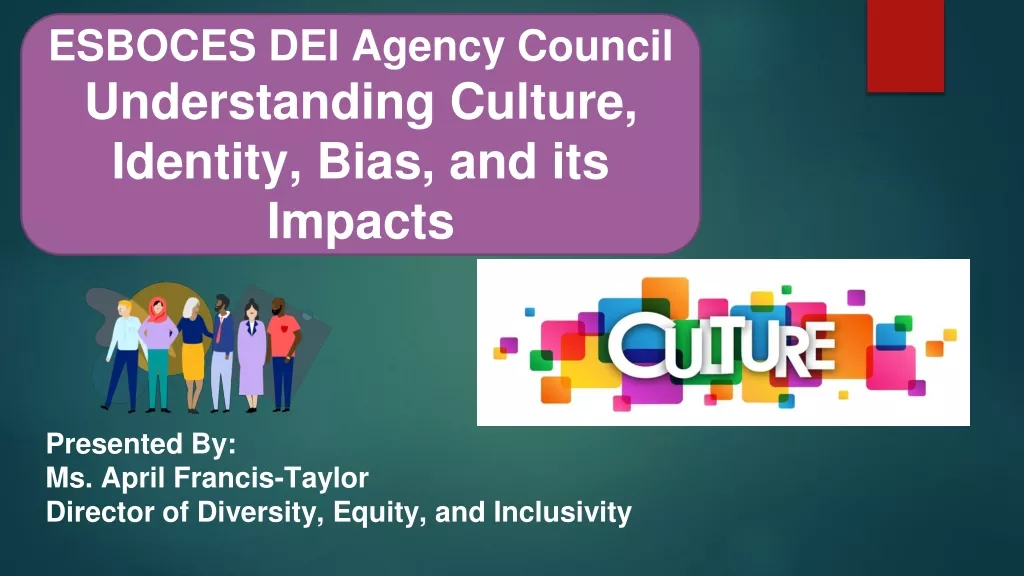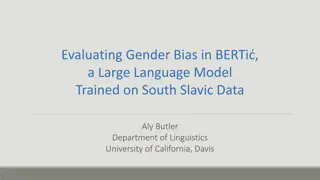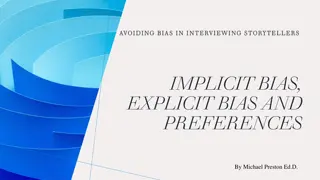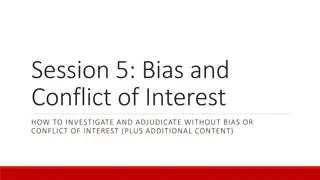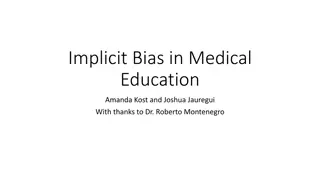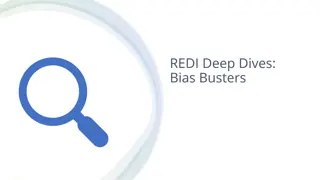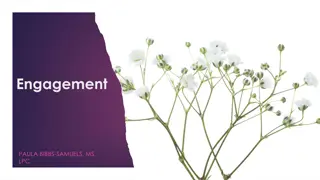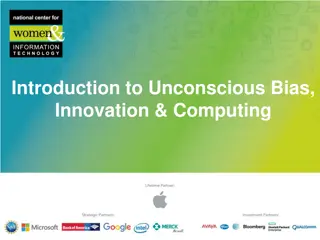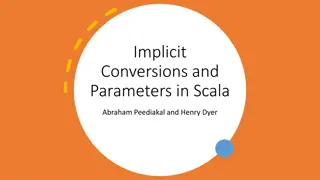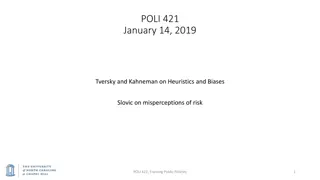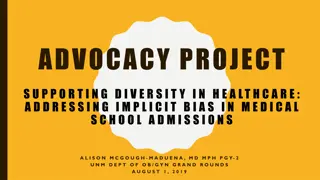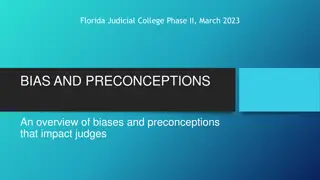Understanding Implicit Bias and Overcoming Negative Biases
Implicit bias influences attitudes and behaviors unconsciously. Learn about its key characteristics, testing methods like the Implicit Association Test, and how to combat negative biases through mindfulness techniques. Explore real-world examples and strategies to address biases effectively.
Download Presentation

Please find below an Image/Link to download the presentation.
The content on the website is provided AS IS for your information and personal use only. It may not be sold, licensed, or shared on other websites without obtaining consent from the author. Download presentation by click this link. If you encounter any issues during the download, it is possible that the publisher has removed the file from their server.
E N D
Presentation Transcript
Implicit Bias Presented by: Cut on the Bias NSULeAds
What is Implicit Bias? Attitudes or stereotypes that affect our understanding, actions, and desires in an unconscious manner. Implicit bias... ...is activated involuntarily. ...cannot control for social/political correctness. ...is not accessible through introspection. ...predicts behavior in the real world.
Key Characteristics Biases are pervasive: everyone has them. Implicit and explicit biases are related but distinctmental constructs. Biases do not necessarily align with our declared beliefs or reflect stances we would explicitly endorse. We generally tend to hold biases that favor our own in-group. Biases are malleable.
How to Test Implicit Bias: Implicit Association Test (IAT) at https://implicit.harvard.edu/implicit/takeatest.html More details: Case Study covers Bias, Institutional Racism, and Disability Studies as part of curriculum White male Professor at NSU who took gender, race, and disability preference tests Wrote dissertation on Disability Studies Results: Membership in National Disability Societies and Advocacy Groups Strong automatic preference for European Americans over African Americans Christian in a church that prides itself on acceptance of LGBTQ+ members with leadership that is racially diverse and female-inclusive Moderate automatic preference for Male with Career and Female with Family Last Test: Moderate automatic preference for abled over disabled Strong automatic preference for Bill Clinton over Donald Trump
Can you get rid of negative biases? Mindfulness techniques state of being often practiced through meditation that involves an increased awareness of our emotions, thoughts, and surroundings, accompanied by a sense of acceptance and non-judgment 1. Context for people s actions (correspondence bias) 2. Decrease wariness in social encounters (negativity bias) 3. See others as equals (self-positivity bias)
How do we make that change? Overall, it may be a challenge There are approaches: I.M.P.L.I.C.I.T.
I Introspection Explore yourself and identify your own types of prejudices Can be done through the self-tests (previously mentioned) or other forms of self-analysis M Mindfulness Pressure, stress, distraction, negative emotion, etc., are more likely to lead towards biases Be aware of and practice ways to reduce stress and increase mindfulness
P Perspective-taking Consider the experiences and viewpoint of the other person "Don't be too quick to judge" is an old saying that still works L Learn to slow down Before interaction, pause and reflect to reduce reflexive actions; for example, if feeling anger or disgust, wait to calm down first
I Individuation Evaluate a person based on their own personal characteristics Focus on these personal attributes of an individual rather than the stereotypes tagged with social groups C Check your messaging Use conversation that is welcoming and embracing of multiculturism and differences The "color-blind" or "we don't see color" approach has been shown in research to increase bias
I Institutionalize equity Establish and support a culture of diversity and inclusion Seek out these opportunities to interact and work with individuals from stigmatized groups, in both professional and personal contexts T Take two Resisting these biases is a lifelong process "Take two" and at times restart these processes to look for new ways to improve
Conclusion Everyone has implicit biases. They are unconscious (beyond our own awareness) thus may surface in times of heightened emotion and stress. They can contradict our spoken beliefs and values. Mindfulness practices can give us glimpses of our own unconscious implicit biases allowing us to learn and improve ourselves and our society.
Conclusion Implicit Bias is difficult to overcome, but not impossible. Remember to be IMPLICIT in your approach: -Introspection -Mindfulness -Perspective-taking - Learn to slow down -Individuation -Check your Messaging -Institutionalize equity -Take two
Take Away Exercises Examine your inner circle: 1. Create an excel sheet/grid. 2. absolutely trust. In the first column, write 5 people you 3. ethnicity, religion, political view, education level, etc. In subsequent columns write their gender, 4. have diversity in certain areas, challenge yourself to expand your circle. If your inner-circle of trusted friends does not Take the bias tests for yourself: Go tonsu.la/Bias to get started.
Sources Mason, Betsy. Curbing Implicit Bias: What Works and What Doesn t https://www.discovermagazine.com/mind/curbing-implicit-bias-what-works-and-what-doesnt Accessed November 10, 2020. Suttie, Jill. Three Ways Mindfulness can make you less biased. https://greatergood.berkeley.edu/article/item/three_ways_mindfulness_can_make_you_less_biased. Accessed December 8, 2020. Turner, Rhiannon N. Imagining intergroup contact reduces implicit prejudice The British Journal of Social Psychology Vol. 49, #1 (March 2010), 129-142. https://doi.org/10.1348/014466609X419901 Understanding Implicit Bias http://kirwaninstitute.osu.edu/research/understanding-implicit- bias/Accessed 10/26/2020.


